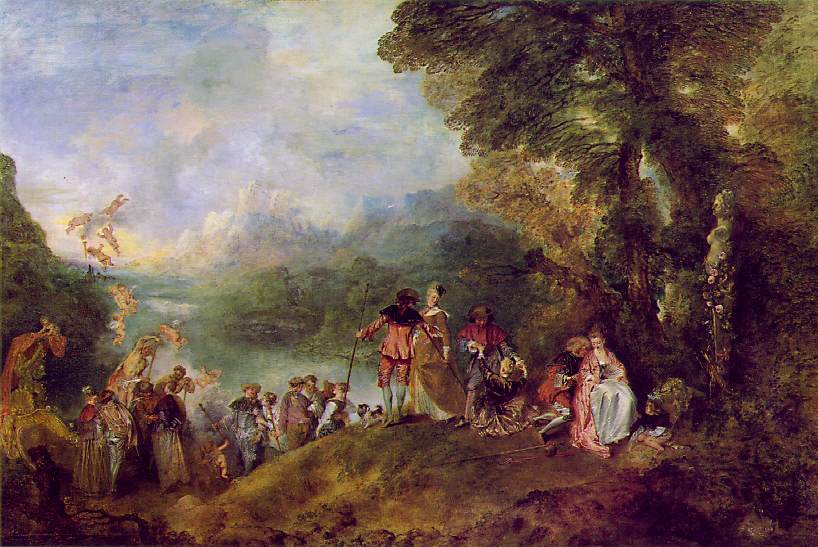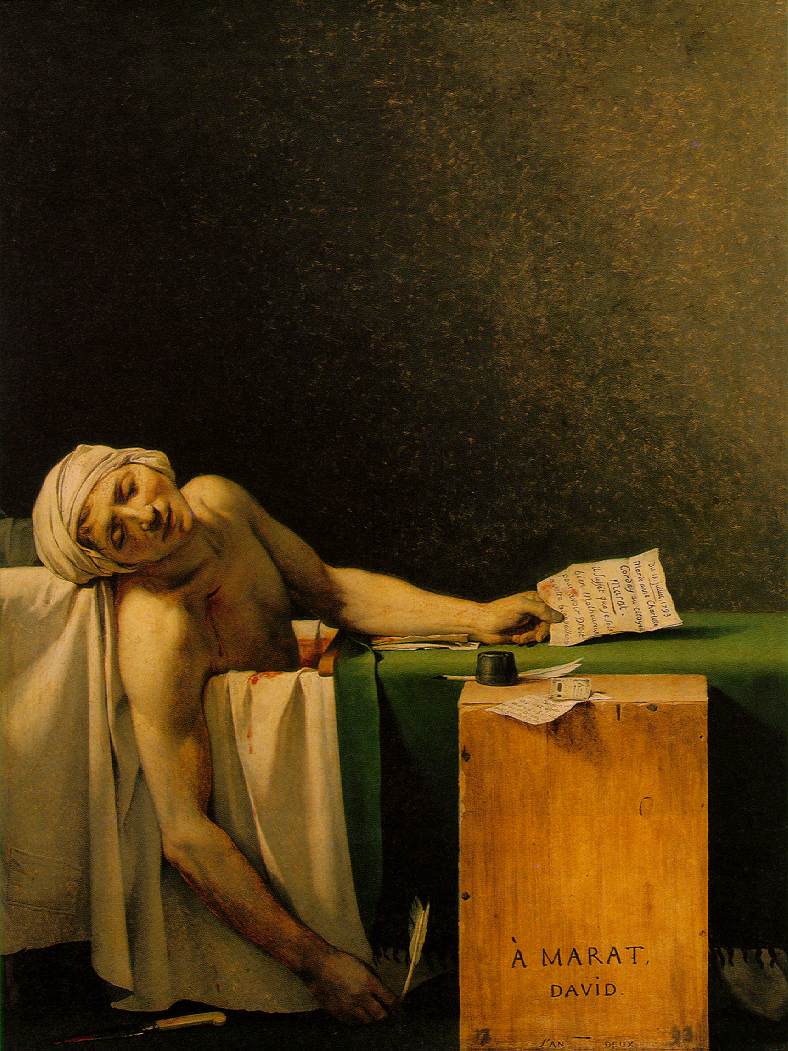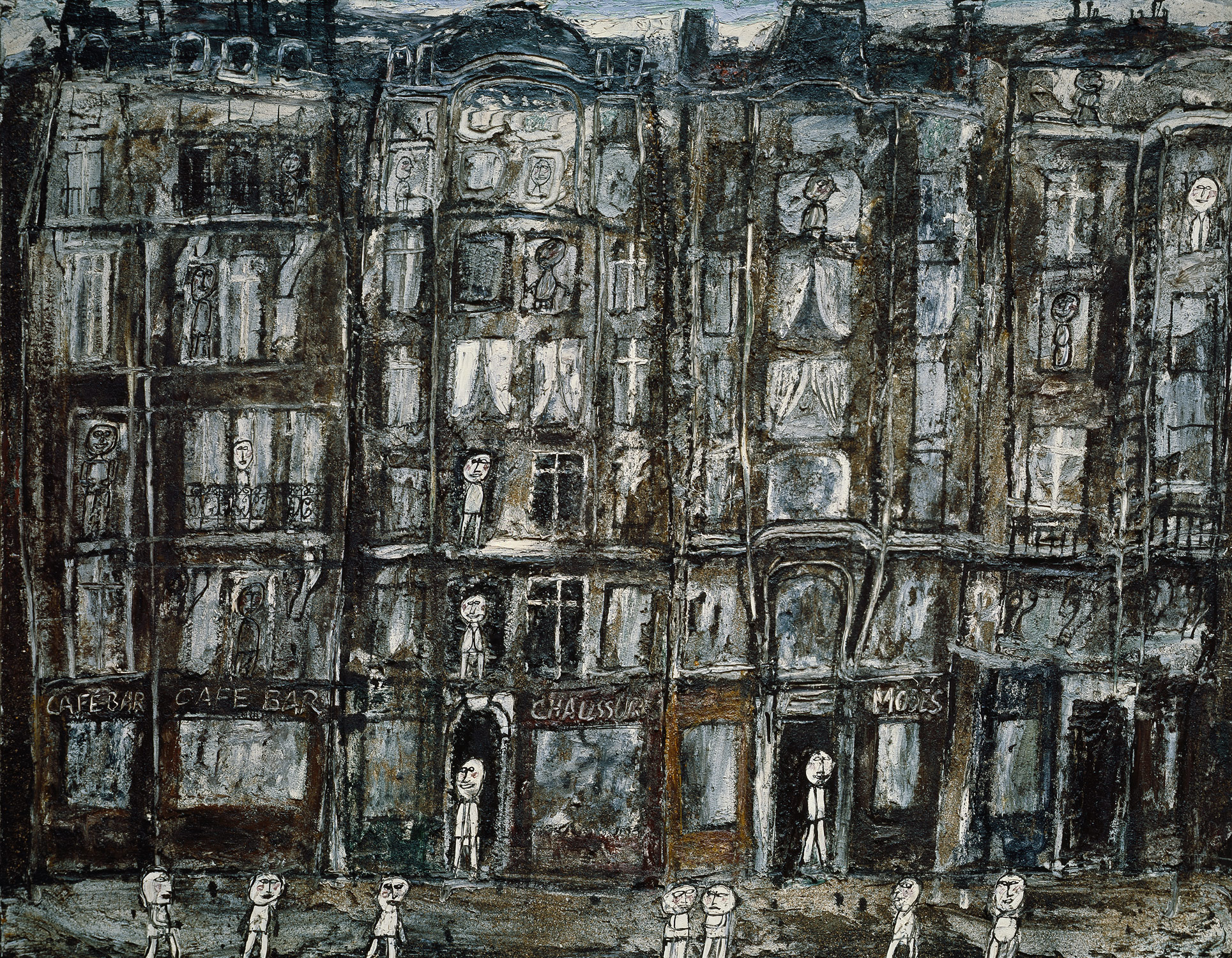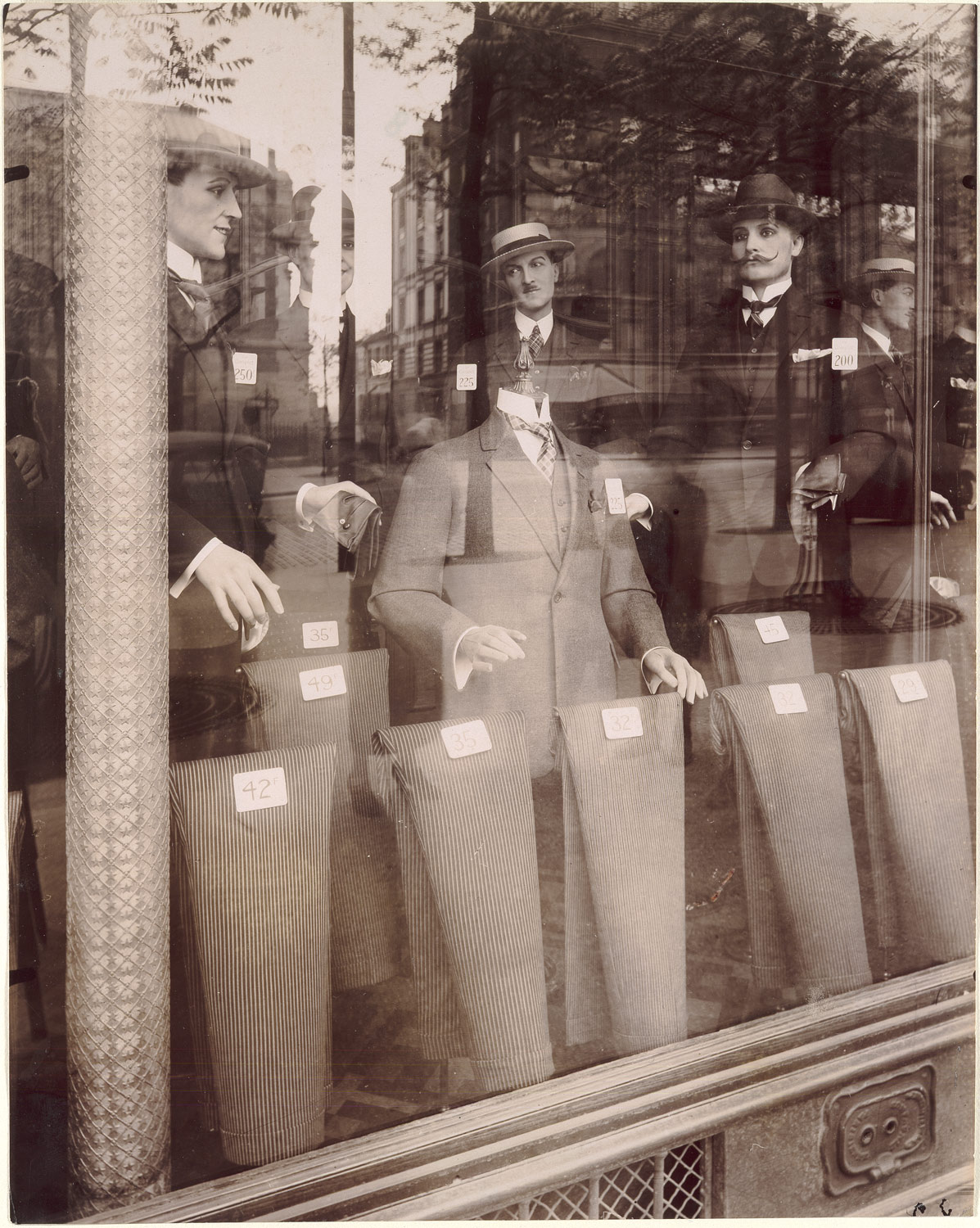| Period | Image | Date | Artist | Commentary |
|
Baroque |
Ecstasy of St. Teresa 
|
1647-52
|
Gianlorenzo Bernini
|
Marble
"By 1624 he had adopted an expression that was passionate and full of emotional and psychological energy. His figures are caught in a transient moment from a single viewpoint, bursting into the spectator's space. In 1644 such interpretation reaches maturity in his rendition of the vision and Ecstasy of Saint Teresa. The Spanish nun swoons in heavenly rapture at the point of an angel's arrow." -Artarchive |
|
Impressionism |
Houses of Parliament, London 
|
1905 |
Claude Monet |
Oil on canvas
"The spiraling brushstrokes of the tower sweep it upward majestically, seeming to draw contrails of the envelope into its vortex. The river, too, takes on a more aggressive aspect, the highlighted wavecrests creating a groundswell at the base of the tower that contributes to the rising effect." -Artarchive |
|
Photography |
Strange Visitors |
1934 |
John Gutmann |
Black and white prints. Photography was beginning to become more popular and the photo shows the darkness not with just the tint of the photo but the subjects. |
|
Romanticism |
Peace - Burial at Sea  |
1842 |
J.M.W. Turner |
Oil on canvas
"Turner outgrew theatrical extravagance but the essential sublimity of the forces that hold man in their grip remained with him always. There is a sense of it in the all-embracing flood of light that envelops a scene, and the spectator too. The last subjects of storm and catastrophe make visible a dream of peril and endurance that is full of heroic exaltation. The elemental drama that Turner painted was both real and imaginary." -Artarchive, Simon Wilson |
|
Rococo |
The Embarkation for Cythera 
|
1717 |
Jean-Antonie Watteau |
Oil on canvas
"Watteau's theatrical influence is also apparent, as his composition has been likened to a choreographed minuet. Indeed, Watteau's work produces an ambiance which leaves the viewer with a poignant longing. The day of love has come to an end.The Embarkation shows French Rococo at its peak. The elegant men, the women dressed in their shimmering silks, and the rose-cheeked cherubs are all indicative of the style of this movement." -Artarchive |
|
Post-Impressionism |
A Sunday Afternoon on the Island of La Grande Jatte |
1884-86 |
Georges Seurat |
Oil on canvas
"Even if the people in the park are pairs or groups, they still seem alone in their concision of form - alone but not lonely. No figure encroaches on another's space: all coexist in peace. His theory was optical: the conviction that painting in dots, known as pointillism or divisionism, would produce a brighter color than painting in strokes." - Artarchive |
|
Neo-Classical |
Death of Marat |
1793 |
Jacques-Louis David
|
Oil on canvas
" During the French Revolution, David played an active role both artistically he reorganized the Académe and produced numerous and spectacular propaganda exercises - and politically, as an avid supporter of Robespierre." -Artarchive
The piece is a symbol to the revolution of a fallen hero and consists of Greek techniques and Classical subject matter. |
|
Expressionism |
The sleep of reason produces monsters |
1797-98 |
Francisco Goya |
Etching with aquatint |
|
Futurism
|
States of Mind: The Farewells

|
1911 |
Umberto Boccioni |
Oil on canvas
"By employing the Cubist interlocking of angular, fragmented planes, Boccioni creates, not the homogeneous glitter of Impressionism, but a dissonant joining and separation of forms almost audible in their clangorous reverberations. The silent, cerebral dissection of form in Analytic Cubism is converted here into the noisy, assaulting ambiance of acoustic, optical, and kinetic sensations of a modern railroad terminus. " -Artarchive |
|
Pop Art |
Woman at the Mirror

|
1966 |
Sigmar Polke |
Acrylic on fabric
"The anarchistic element of the work Polke developed was largely engendered by his mercurial approach. His irreverence for traditional painting techniques and materials and his lack of allegiance to any one mode of representation has established his now-respected reputation as a visual revolutionary.A complicated "narrative" is often implicit in the multi-layered picture, giving the effect of witnessing the projection of a hallucination or dream through a series of veils. " - Artarchive |
|
Sculpture |
Hang Up

|
1966 |
Eva Hesse |
Acrylic on cord and cloth, wood, and steel
". Hang Up, 1965-66, looks at first like a query about illusion and reality - the big rectangular frame hanging on the wall with no picture in it, but with a loop of steel tube spilling onto the gallery floor and connecting the frame's top left to its bottom right corner. But again, there's a fleshy metaphor. Both tube and frame are wrapped in cloth, like bandaged parts of a patient, and the tube might be circulating some kind of fluid. Blood? Lymph? Fantasies? Even in absence, the body is somehow there, as an ironically suffering presence; the title phrase, 'Hang-Up,' means both what you do to pictures and (in 'sixties slang) a mental block, a neurosis." -Robert Hughs for Artarchive |
|
Renaissance |
The Virgin of the Rocks

|
1503-1506 |
Leonardo da Vinici |
Oil on wood
"We can always tell a Leonardo work by his treatment of hair, angelic in its fineness, and by the lack of any rigidity of contour. One form glides imperceptibly into another (the Italian term is sfumato), a wonder of glazes creating the most subtle of transitions between tones and shapes." -Artarchive |
|
Symbolism |
The Scream

|
1893 |
Edvard Munch |
Oil, tempera and pastel on cardboard
"Munch's art represented his own emotions, mostly the darker ones of fear, dread, loneliness, and sexual longing, with extraordinary expressiveness. The screaming figure personifies existential horror. A precursor of this image is a drawing of a man (Munch himself) on a similar bridge, with a blood-red sky above. A text accompanying this drawing states: "I walked with two friends. Then the sun sank. Suddenly the sky turned as red as blood … My friends walked on, and I was left alone, trembling with fear. I felt as if all nature were filled with one mighty unending shriek."-Met Museum |
|
Modern Art |
Apartment Houses, Paris
|
1946 |
Jean Dubuffet |
Oil with sand and charcoal on canvas
44 7/8 x 57 3/8 in. (114 x 145.7 cm)
"The street, sidewalks, and houses are stacked in rows, one above the other, without perspective, depth, or modeling. Windows and shop signs are stuck at random onto facades. The overall effect evokes the backdrop of a puppet theater, such as Dubuffet himself had built and decorated during his previous interlude as a painter (1934–37), when he also carved and painted marionettes."-Met Museum
|
|
Photography
|
Avenue des Gobelins
|
1927 |
Eugene Atget |
Albumen silver print from glass negative
8 5/8 x 6 13/16 in. (21.9 x 17.3 cm)
" The apparent subject of this picture is the art of commercial display in Paris in 1925. But the reflection in the window muddles the issue, for it obscures the clothing and seems to animate the mannequins and place them in the street. The picture's transparent lamination of real and artificial, outdoor and indoor, fluid and static, shimmer and substance, dissolves traditional boundaries between fact and imagination. The more complex unities it proposed appealed greatly to the Surrealists." -Met Museum
|
|
Pre- Raphaelites |
Beata Beatrix

|
c. 1864-70 |
Dante Gabriel Rossetti |
Oil on canvas
"True to form, the painting is full of symbolism: the red dove is an emblem of death, while the sundial is pointing at the hour of nine, the time of her death; the poppy 'in her hands is the clearest indication of all, bringing as it does the sleep of death, in her case the opiate laudanum."- Artarchive |
|
Spanish |
Laocoon

|
1608-1614 |
El Greco |
Oil on canvas
"The serpents seem oddly ineffectual, thin and meager; we wonder why these muscular males have such trouble overcoming them. And we feel that this is an allegory more than a straightforward story, that we are watching evil and temptation at work on the unprotected bodies of mankind. Even the rocks are materially unconvincing, made of the same non-substance as the high and clouded sky."- Artarchive |
|
Cubism |
Violin and Candlestick
|
1910 |
Georges Braque |
Oil on canvas
|
|
Art Nouveau |
The Climax

|
1893 |
Aubrey Beardsley |
From Salome by Oscar Wilde
"Ambitious and supremely gifted, the young artist developed a perverse and playfully theatrical style partly inspired by Greek vase painting. The venomous elegance of his drawings has an ornamental rhythm akin to the abstract decorations of Islamic palaces. His characters are often grotesque - notably in drawings he later described as "naughty", representing, for example, grimacing "Gobbi" afflicted with monumentally tumescent phalluses."- Artarchive |




